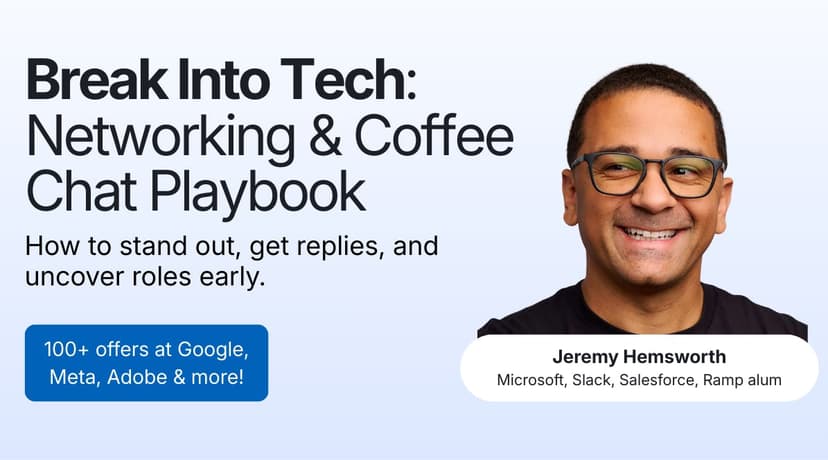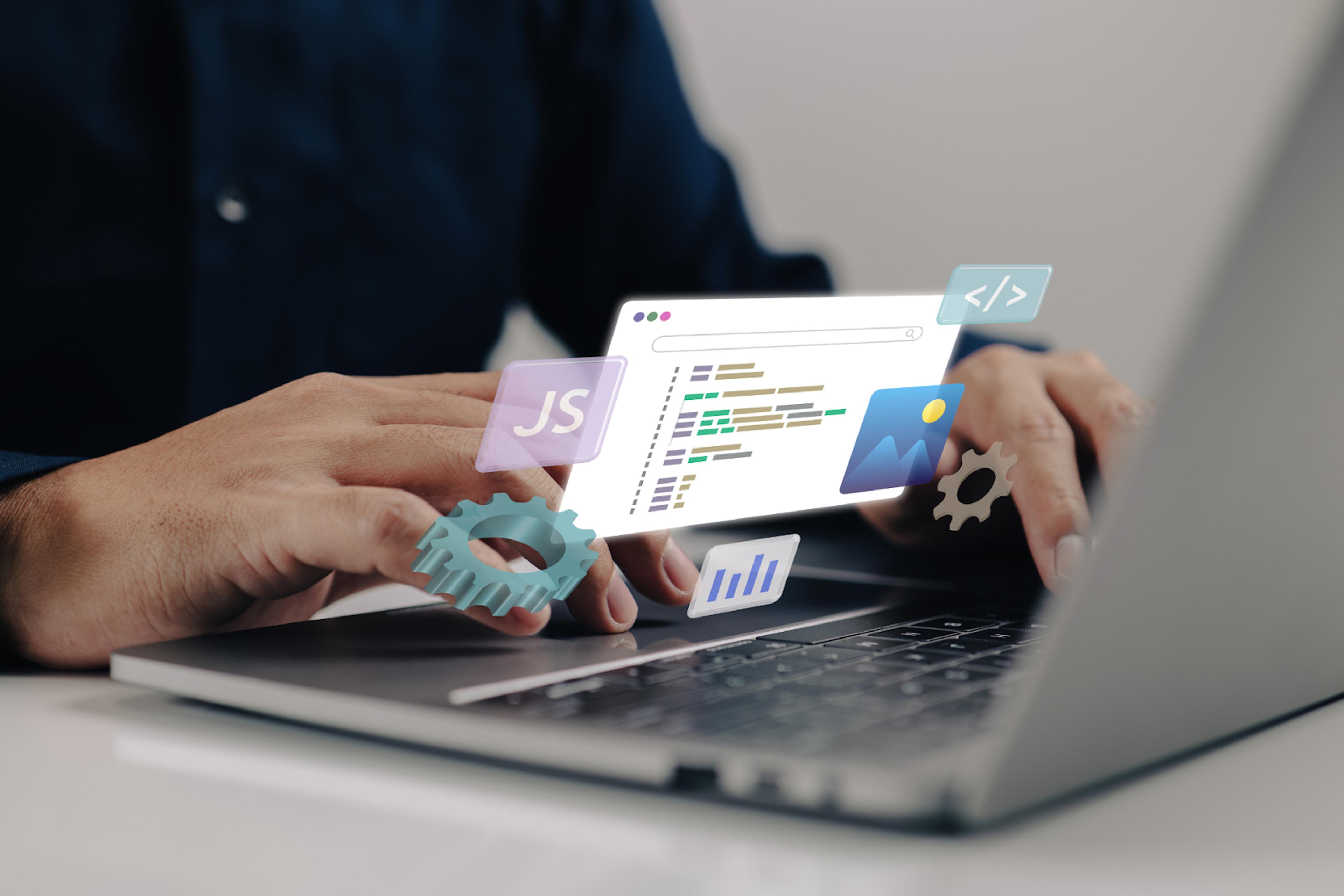Product Management Case Studies: Real Examples & How to Solve Them
Master product management case studies with expert frameworks, real examples, and step-by-step strategies to ace your next PM interview with confidence.
Posted October 24, 2025

Join a free event
Learn from top coaches and industry experts in live, interactive sessions you can join for free.
Table of Contents
If you're preparing for product manager interviews, the product management case study is one of the most revealing and challenging components of the interview process. These exercises simulate real-world scenarios, requiring you to demonstrate your problem-solving skills, strategic thinking, and ability to align user needs with business goals.
In this expert-driven guide, you’ll learn exactly how to approach product manager case study interviews, with tactical strategies, sample case studies, and insider prep tips from product leaders at top companies. Whether you’re solving a live prompt or submitting a take-home deck, this guide will help you show up like a seasoned PM.
Read: What is Product Management?
What Is a Product Management Case Study?
A product management case study is a simulation of the trade-offs and decisions you’d make as a PM. Rather than testing technical knowledge, it’s designed to assess how you structure ambiguity, collaborate across cross-functional teams, and prioritize decisions based on user behavior, market research, and business constraints.
You may be asked to:
- Design a user-friendly interface or a new feature for a mobile app
- Develop a pricing strategy for an existing product
- Enter a new product market
- Analyze user feedback to drive product improvement
These case studies can take the form of:
- Live interviews, where you think out loud and adapt in real time
- Take-home assignments, where you deliver a slide deck or a written report
They’re often used in multiple rounds and are a favorite tool of top companies like Google, Meta, and Amazon to identify product talent.
Read: Tips from an Expert: How to Prepare for Your Product Management Interview
What Product Manager Case Study Interviews Actually Assess
While the format may vary, top companies tend to evaluate the same core competencies:
Structured Problem Solving
This is the foundation. Can you bring clarity to ambiguity? Can you break a vague problem into actionable steps, apply the right frameworks, and focus on what matters most? Interviewers are looking for strong problem-solving skills, not pre-baked answers.
Communication and Influence
Great PMs are translators between users, engineers, designers, and executives. Case interviews assess your ability to communicate ideas clearly, justify trade-offs, and engage stakeholders in your logic. This includes storytelling, visual thinking, and concise framing.
Product Vision and Strategic Thinking
Can you define a compelling product direction? Can you build a roadmap that balances long-term growth with short-term constraints? You’ll need to demonstrate a clear product strategy that’s rooted in customer needs, market dynamics, and competitive positioning.
Creativity and Innovation
Can you generate novel, user-centric solutions? Are you willing to challenge assumptions and reframe the problem? Case interviews test your ability to propose transformative products, rethink outdated flows, and inject creative product ideas that drive value.
Business and Market Acumen
Do you understand how the product fits into the company’s business model? Can you identify levers for growth, risk, or differentiation? Interviewers expect you to reference market research, competitive analysis, and industry trends with fluency.
Metrics, Testing, and Iteration
Product thinking without measurement is just guessing. Strong PM candidates know how to define success using metrics like monthly users, conversion rate, NPS, or retention. They bring in user testing, MVP validation, and minimum viable product logic to de-risk ideas and scale what works.
Expert Insight: Don’t just focus on getting to the “right” solution. Spend time articulating your assumptions, defining success, and showing how you’d test and iterate based on user feedback and usage data.
Types of Product Management Case Studies
Companies test a range of skills using different types of case studies. You’ll likely encounter one or more of these:
| Type | What It Tests | Example Prompt | What Interviewers Look For | Recommended Frameworks & Tools |
|---|---|---|---|---|
| Product Design | Product intuition, user empathy, creativity, prioritization | “Design a grocery delivery app for busy professionals.” | Interviewers want to see that you can define the right user personas, uncover core pain points, and propose feasible, user-centric solutions. They’re also looking at how you prioritize features, balance trade-offs, and account for technical constraints or edge cases. | CIRCLES, JTBD, SCAMPER, Figma, Miro |
| Product Strategy | Strategic thinking, market awareness, business acumen | “How would you monetize Facebook Messenger?” | They’re assessing whether you can connect product choices to business impact. This includes understanding business models, aligning with company goals, analyzing competitors, and selecting pricing or distribution strategies with clear success metrics. | SWOT, Porter’s Five Forces, RICE, AARM |
| Data Analysis & Estimation | Analytical reasoning, comfort with ambiguity, and KPI definition | “Estimate Gmail’s number of daily active users.” | Strong candidates break down ambiguous problems logically, use realistic assumptions, and clearly explain their approach. Interviewers want to see your comfort with key metrics, how you interpret market data, and your ability to support decisions with analysis. | Metric Trees, AARRR, SQL, Excel |
| Go-to-Market (GTM) & Operations | Execution, cross-functional planning, business outcome delivery | “Launch a mobile app in a new market with high smartphone penetration.” | Interviewers want to see how you scope a launch across target users, timelines, and channels. They're evaluating how you craft GTM plans, coordinate teams, and ensure product-market fit, while balancing constraints and clearly defining success. | GOST, AIDA, 5W2H, Launch checklists |
Each of these can be tailored to the company’s stage and goals, and strong candidates bring valuable insights from their experience or market trends.
For more frameworks, read: Product Design Interview: What It Is, Questions, & Tips
Why Companies Use Product Manager Case Study Interviews
World-class companies use product management case study interviews not just to assess candidates’ resumes or technical knowledge, but to simulate the full complexity of the product lifecycle, from early discovery through launch and iteration.
These interviews reflect the ambiguity PMs face daily and offer a front-row seat into how candidates break down complex ideas, collaborate with product teams, and communicate clearly under pressure. Strong communication skills are critical here: can a candidate convey trade-offs, stakeholder needs, and real-time insights with clarity and influence?
Case studies also help companies evaluate how candidates structure their thinking. Whether it’s sizing a market, navigating technical questions, or crafting a roadmap, great candidates apply design thinking, uncover user pain points, and translate them into actionable insights. They don’t just ideate, they prioritize smartly, connect ideas to outcomes, and adapt based on feedback.
Most importantly, these interviews are a powerful predictor of performance. Candidates who ask sharp questions, tie strategy to market size, and gather insights from real users are often the ones who succeed on the job. Whether aligning stakeholders with similar interests or choosing between a core feature and gamification elements, top PMs demonstrate leadership, clarity, and execution readiness.
Expert tip: Treat your case like a live product sprint, not a test. Lead with structured thinking, curiosity, and impact.
Real-world insight: In a Reddit thread, candidates shared that even "on-the-spot" interviews require practice. One user emphasized the importance of mock sessions with peers to simulate the pressure and sharpen decision-making. You won’t get good at these by just reading; you need reps.
How to Prepare for a Product Manager Case Study Interview
Preparation isn’t just recommended for product manager case studies; it’s expected. The best candidates treat these interviews like simulations of the real job: deeply cross-functional, strategy-heavy, and rooted in clarity under pressure. Here’s how to prep like a PM who’s already operating at the next level.
Start with Deep Company and Market Context
Before anything else, immerse yourself in the company’s product, business model, and target users. You need to understand not just what they build, but why and how they differentiate themselves in a crowded landscape. That means analyzing recent product launches, identifying market trends and shifts in customer behavior, and studying the company’s competitors through your own lightweight competitive analysis.
If you’re interviewing at a consumer app, your priorities for product design and go-to-market execution will look dramatically different than those if you were targeting a B2B SaaS role. The same goes for how you think about customer engagement and acquisition, product strategy, and even potential pricing models. For instance, a B2B product may call for value-based tiers, while a consumer product might lean into freemium or usage-based pricing. Understand what success looks like in their context—not just in theory.
Ground Yourself in Frameworks, Then Go Beyond Them
Frameworks help product managers bring clarity to chaos. Tools like CIRCLES, RICE, and AARM are excellent scaffolds for organizing your thoughts during the interview. They can help you prioritize features, walk through trade-offs, and tie your product decisions back to metrics that matter.
But don’t become overly rigid. The best candidates use frameworks to clarify, not constrain their thinking. Whether you’re tackling a product design prompt or mapping out a growth strategy, focus on using structured thinking to communicate your logic, not to check a mental box.
Frameworks aren’t a substitute for real product thinking. Use them as a starting point, but let your own judgment, experience, and creativity guide your response, especially when surfacing unexpected user preferences and insights or proposing innovative ideas.
Practice Like It's Game Day
Reading case questions isn’t enough; you need live reps. Set up mock case interviews with peers, mentors, or product coaches who can challenge your assumptions and push your thinking. Talk through your logic out loud, handle curveball questions, and get feedback on your ability to structure ambiguity under time pressure.
What separates top-performing product managers is not just what they say, but how they think on their feet. Practicing aloud also helps refine your storytelling, clarify your assumptions, and strengthen your communication under stress. Don’t forget to record a few sessions; you’ll be surprised how much you can tighten up just by hearing yourself.
This is also a chance to build fluency in handling common themes like user segmentation, growth loops, funnel metrics, or the balance between product vision and technical constraints. Great answers often blend product intuition with business rigor.
Sharpen Your Analytical Toolkit
Data is the backbone of strong product decisions. You should be comfortable modeling user behavior, running back-of-the-envelope estimates, and choosing the right success metrics depending on the business model. Practice using tools like Excel and SQL to manipulate data, visualize insights, and back your decisions with credible numbers, even when you're working from assumptions.
It’s also critical to develop instincts around how to validate ideas. Pair quantitative analysis with qualitative inputs from user research, surveys, or interviews. For example, when proposing a new feature or growth lever, explain how you’d de-risk it: What user signals would you look for? What early indicators of traction would justify iteration or scale?
Expect to be tested on your ability to tie metrics to impact—whether it’s DAU, conversion rate, LTV, churn, or cohort retention. If you suggest a growth marketing initiative or marketing campaign, be ready to explain how you'd measure its effectiveness, segment users appropriately, and adjust based on feedback or market response.
Example Product Manager Case Study Questions (and How to Approach Them Like an Expert)
Interviewers don’t just want answers; they want to see how you think. In a product manager case study, your job is to demonstrate structured thinking, product intuition, and a clear understanding of trade-offs. Below are common types of prompts and what a strong response might look like.
1. Design a mobile application for people with dietary restrictions (e.g., Celiac disease)
This is a product design case that tests user empathy, innovation, and execution clarity.
What a strong answer looks like: Start by defining your target users—people newly diagnosed with Celiac who struggle to find gluten-free food. Then, anchor your solution in real user research: What do they need most? Likely features could include barcode scanning, cross-contamination warnings, restaurant filters, or even peer reviews. Tie these back to key metrics like daily active users, feature adoption, and retention.
Example insight:
“One of the biggest pain points from interviews is trust—people don’t know if a product is truly safe. I’d prioritize verified product reviews and scanning functionality over gamified features. Success would be measured by retention (weekly usage), repeat scans, and NPS.”
2. Improve user engagement for Google Maps among Gen Z
This is a user engagement + growth case focused on retention and stickiness.
What a strong answer looks like: Define what engagement means (e.g., time in app, DAUs, repeat navigation, saved places). For Gen Z, who values personalization and social interaction, you might introduce features like shareable location lists, collaborative trip planning, or integrations with TikTok or Spotify.
Example insight:
“Gen Z over-indexes on aesthetic-driven discovery. I’d explore an ‘Explore This City’ feature with influencer-curated maps. We’d A/B test this against current engagement tools and measure lift in session length, re-engagement rate, and shared lists.”
3. Create a pricing strategy for YouTube Premium in emerging markets
This is a product strategy and pricing case that tests your understanding of market segmentation, monetization, and business model adaptation.
What a strong answer looks like: Consider price sensitivity, payment infrastructure (e.g., prepaid mobile), and content consumption habits. Propose a tiered or localized pricing model—perhaps an ad-light version or mobile-only plan, grounded in research on ARPU and churn.
Example insight:
“In India, 70%+ of video streaming happens on mobile. I’d test a mobile-only $1/month tier with offline download and reduced ads. I’d define success as trial-to-paid conversion and monthly revenue per user in target regions.”
4. Expand LinkedIn into a new market (e.g., rural India)
This is a new market entry case that tests product localization, distribution, and go-to-market thinking.
What a strong answer looks like: Understand the local user behavior. In rural India, professional identity may be tied to small business, agriculture, or blue-collar work—very different from LinkedIn’s traditional base. Focus on mobile UX, voice/video content, local languages, and low-bandwidth performance.
Example insight:
“Our first challenge is redefining the ‘professional network’ concept. I’d launch with job discovery and vocational upskilling features via WhatsApp integration. I’d measure success with daily active users, resume uploads, and job application conversion rate.”
5. Build a product roadmap for a B2B scheduling tool
This is an execution + prioritization case that tests roadmap thinking, stakeholder alignment, and trade-off management.
What a strong answer looks like: Anchor your roadmap in customer needs from user research: what’s painful or slow today? Prioritize features that drive efficiency (e.g., calendar sync, multi-timezone detection, Slack integrations). Layer in internal goals like activation and churn reduction. Use a prioritization model like RICE or MoSCoW.
Example insight:
“Our user research shows that rescheduling friction causes churn. I’d prioritize a self-serve rescheduling feature over long-term AI matching. My Q1 roadmap would focus on adoption drivers, with success measured by reduced no-shows and time-to-meeting booked.”
Read: The 50 Most Common Product Manager Interview Questions (With Sample Answers)
5 Steps to Structure Your PM Case Study Response
Every great response in a product manager interview follows a clear, logical progression. The best candidates don’t just share ideas; they demonstrate how they think, how they make trade-offs, and how they align solutions to real-world constraints. Use this five-step structure to showcase structured thinking, business acumen, and product intuition without sounding formulaic.
Step #1: Clarify the Problem
Before jumping into solutions, slow down and define the problem space. Ask clarifying questions to understand the business goal, the user pain points, and the broader context of the challenge. Are you solving for user acquisition, engagement, monetization, or retention? What constraints should you assume? technical, timeline, team?
This step also helps align with the hiring manager’s expectations. In product manager interviews, strong candidates clarify ambiguous prompts with confidence, ensuring they’re solving the right problem, not just the visible one.
Step #2: Frame with a Structure
Once you understand the challenge, lay out your approach using a clear framework like CIRCLES, RICE, or a hybrid of your own design. The goal here is to organize your thinking so the interviewer can follow your logic.
Whether you're designing a feature or entering a new market, your structure should reflect product-first thinking: What are the user needs? What are the success metrics? What are the external factors that might influence this solution (e.g., regulation, device penetration, bandwidth, seasonality)?
Don’t overcomplicate it. A simple, well-explained structure often beats a jargon-heavy one.
Step #3: Explore the Landscape
Now ground your solution in a real-world context. Who are the customer segments? What’s their behavior, motivation, and unmet need? How saturated is the market? Who are the competitors?
Even in a time-boxed case, strong PMs do lightweight market research on the fly, mentioning industry benchmarks, relevant market dynamics, or findings from past user research. If a product already exists, what’s missing? What’s the current value proposition, and why might it not be resonating with a certain segment?
This is where you demonstrate strategic thinking: you’re not just building a feature, you’re solving for adoption, differentiation, and impact.
Step #4: Prioritize and Recommend
Resist the urge to boil the ocean. Prioritize 1–2 high-impact ideas that solve the core problem well, and explain why they matter most. Use a framework like RICE (Reach, Impact, Confidence, Effort) or simple impact vs. effort trade-offs to justify your choices.
Explain your rationale clearly: What makes this idea feasible given current constraints? How does it address the most pressing user pain points for your target customer segment? Why does this recommendation align with the company's strategy or market opportunity?
A great product manager doesn’t just ideate—they make tough calls with conviction.
Step #5: Define How You’ll Measure Success
End your response by tying everything back to metrics. What does success look like, and how will you know if you’ve achieved it?
Reference meaningful success metrics aligned with the business goal: DAU, retention rate, LTV, conversion rate, NPS, or revenue growth. Make it clear which data you’d track, how often, and how you’d adapt based on what you learn.
This is also a great place to bring up testing and iteration. How would you validate the solution early? What signals would show product-market fit? What assumptions would you monitor as part of a phased rollout?
Final Tips From the Field
- Balance user empathy with business rigor. The best case study responses integrate deep user insight with a clear understanding of the company’s business model, revenue drivers, and constraints. Don’t just solve for the user, solve for the business.
- Tailor your approach to the company’s product philosophy. Each company has a different product culture: some are design-led, others are growth- or engineering-driven. Study how they ship, how they monetize, and what their competitive advantages are, and then align your thinking to fit that mold.
- Practice under real interview conditions. The interview isn't just about your answer; they want to know how you think under pressure. Practice speaking out loud, structuring your responses live, and adapting when follow-up questions challenge your assumptions.
- Frame trade-offs clearly and confidently. The best PMs lean into constraints; they don't avoid them. Show that you can weigh options, justify decisions, and prioritize under pressure, even when no answer is perfect.
- Demonstrate clarity, curiosity, and conviction. Don't worry about being flawless. Thoughtfulness matters a lot more. Ask smart questions, communicate your logic, and show genuine enthusiasm for solving hard problems. These signals matter as much as the solution itself.
Ready to Ace Your Case?
Nailing a product manager case study isn’t about memorizing frameworks or guessing the “right” answer. It’s about showing you can think like a PM, someone who brings clarity to chaos, balances user needs with business outcomes, and makes smart decisions with incomplete information.
The strongest candidates don’t just respond to prompts. They lead the conversation, ask the right questions, and leave interviewers thinking, “This person already thinks like a product leader.”
If you're serious about leveling up, don't do it alone.
Book a free intro call with a top product management coach. Whether you're struggling to structure your answers, define success metrics, or tell a compelling product story, we’ll help you refine your strategy and practice live with someone who’s been on the other side of the interview table at companies like Google, Meta, Amazon, and more. Also, check out free events for more strategic PM insights!
See: The Top 10 Product Management Consultants & Coaching Services
Read these next:
- Data Product Manager Interviews: Questions & Tips
- Product Design Interview: What It Is, Questions, & Tips
- How to Nail the Atlassian APM Interview
- How to Ace Your Capital One Product Manager Interview
- The North Star Framework: How to Define and Achieve Product Success
- Most Common Technical Questions in Product Management Interviews
- 20 Common System Design Interview Questions (With Sample Answers)
- The 10 Best MBA Programs for Product Management
- How to Become an Associate Product Manager (APM) in 2025
- The Ultimate Guide to Product Manager Portfolios (With Examples)
FAQs - Product Manager Case Study Interviews
What does a product manager case study look like?
- It’s usually a hypothetical scenario where you’re asked to design, improve, or strategize around a particular product. Expect to justify your thinking with metrics, frameworks, and real product intuition.
How do I prepare for a product manager case study interview?
- Study product design and product strategy frameworks, research the company, and practice structuring your responses. Rehearse out loud with peers, coaches, or in front of a mirror.
What are the success metrics in case interviews?
- They depend on the goal, but common ones include DAU, conversion rate, LTV, churn, NPS, and engagement time. Be ready to explain how you’ll measure success.
How do I demonstrate strong problem-solving skills?
- Clarify the problem, use structured logic, bring in relevant data, and balance user and business needs. Think out loud to show your reasoning.
Why do companies use product management case studies?
- They simulate the real work of PMs, where decisions are messy, inputs are incomplete, and trade-offs are constant. It’s the best way to test your ability to handle real-world scenarios.
Browse hundreds of expert coaches
Leland coaches have helped thousands of people achieve their goals. A dedicated mentor can make all the difference.


























